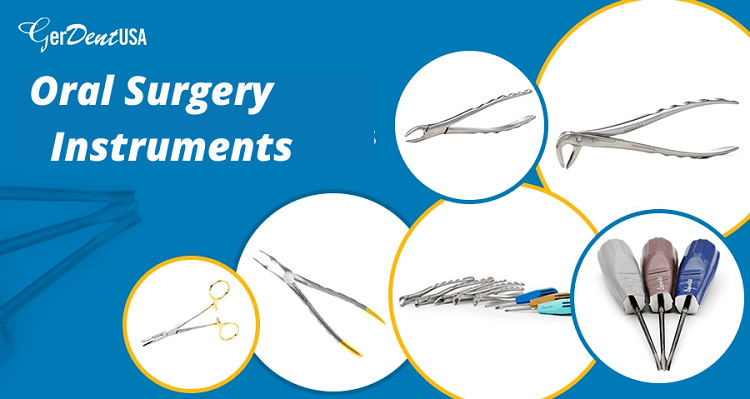The procedural treatments of oral health problems are not alike. The utilization of oral surgical tools depends on the dental procedure’s needs. For this reason, dentists must be observant when choosing between huge varieties of dental instruments.
Following is the detail of some traditional oral surgical instruments that are common in clinical practices for dentists. The nature and abilities of every tool differ from the next. That?s how the collective impact of the tools changes on the whole.

Different Oral Surgical Instruments
1. Dental Probes
The probes are a part of the diagnostic tool family in dentistry. They are basically for examining the tooth based on the severity of the calculus and plaque buildup on the surface. With the help of dental probes, dentists can also examine the condition of the tooth.
2. Dental Forceps
The forceps are among regular dental tools because of their standard utilization in exodontia. Forceps help carry the displaced tooth, allowing the dentists to extract the tooth from the socket with the help of elevators. Also, the blades can easily cut the connection of roots and periodontal fibers for possible tooth expulsion.
3. Pliers
Pliers have some essential functions for smooth dental applications. For example, the dentist adjusts the metallic structures like wires and pins during dental implantation procedures. Besides, these have a chief utilization other than the dental applications.
4. Dental Examination Mirror
Not a single dental procedure does not include dental mirrors. They fall under the broad category of dental diagnostic tools. The central role is to give the dentist good-angle visibility of the confined areas of the mouth. The mirror reflects the tooth from different sides.
5. Dental Explorers
The explorers are for initial examining the teeth and other structures before moving on to procedural steps of the treatment. The goal is to evaluate major oral health issues like cavity, tooth breakage, plaque buildup, enamel removal, and yellow teeth. In addition, it can help explore gum-relevant problems like swelling and gum recession as well.
6. Ultrasonic Scaler
The field of dentistry is among highly active professions due to advanced dental instruments. The function of this scaler is to produce high-frequency sound waves that will help shatter the hard plaque buildup from the tooth surfaces.
7. Needle holder
The needle holders are for adjusting with the appropriate needle size to seal the wounds. The function of a needle holder is to make it suitable for the user to drive the needle around and within the ruptured skin site of the wound for quick and viable closure. This practical tool is among versatile surgical equipment with sub-categories.
8. Suturing Instruments
These tools refer to those that help in wound opening and closing. This parent class includes stitching tools like scissors, needle holders, and others. Based on their splendid performance during alarming medical situations, these have made a concrete place among basic surgical tools in clinics and hospitals.
Studies have shown that some of the standard dental tools can be quite favorable for surgical applications, like in the case of forceps that carry the teeth and anatomical structures like tissues, membranes, and blood vessels.
Conclusion
Dentists should have quality material. Every dental surgical instrument is available in different sizes, lengths, and designs. Dentists can select as per procedure or ease.
Consider buying dental surgical instruments from GerDentUSA because there, you will get your dental surgical instruments at competitive prices. In addition, every instrument is forged with German stainless steel or Tungsten Carbide material. So grab the dental tools for your clinic now.
Frequently Asked Questions
What is dental equipment?
Dental equipment is a large group with all the common dental instruments for dental procedures. These include dental elevators, forceps, mirrors, scalers and curettes, probes, and many more. Some tools look similar, but the functions vary for all dental applications.
What are the instruments of tooth extraction?
The organic tooth removal procedure predicates dental elevators and forceps that operate together by gently dislocating the tooth and carrying it out of its socket. This combination lays the foundation for successful dental procedures for exodontia without any potential risk of trauma to healthy oral structures.

As the editor of the blog, She curate insightful content that sparks curiosity and fosters learning. With a passion for storytelling and a keen eye for detail, she strive to bring diverse perspectives and engaging narratives to readers, ensuring every piece informs, inspires, and enriches.









